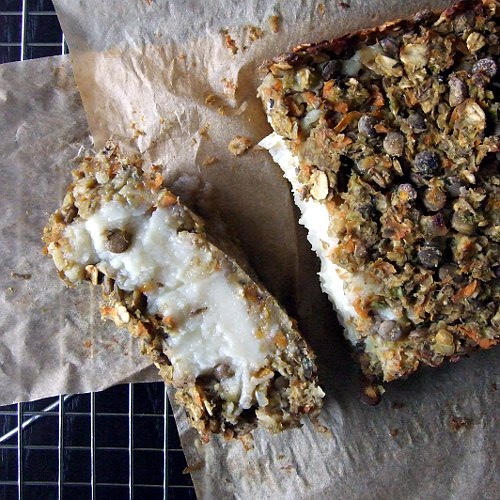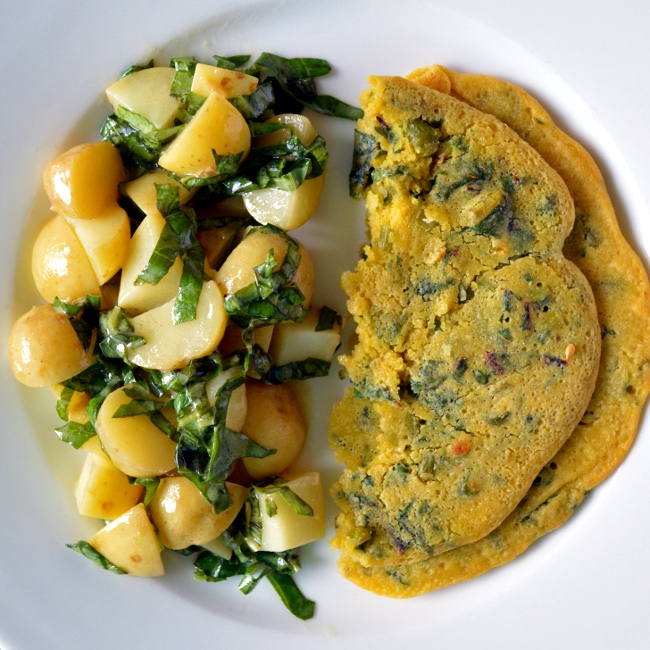What do you do when you’ve been diagnosed with a food allergy and your favourite foods are taken away? Fear not! Each month FBC member and certified nutritionist, Sondi Bruner, takes a look at how to adapt to an allergen-friendly diet, while still eating delicious and healthy food. This month she explores dried beans, those nutritional powerhouses that are being celebrated in the International Year of Pulses.

Back in 2016, The United Nations declared it to be the International Year of Pulses.
But I think I speak for many of us when I say that every year is the year of the pulse. Dried beans, lentils, peas and chickpeas are small powerhouses of nutrition and we Canadians have a long history of growing them. Of course, I'm happy to see beans and legumes get the recognition they so richly deserve — and proud that Canada is one of the top growers of these wonderful foods. Last year, Canada exported six million tons of pulses — that's a lot of bean power (and perhaps a lot of toots, though we'll get to that later).
What is a Pulse?
Pulses are members of the legume family, but specifically legumes that are dried. Pulses include dried beans, lentils, peas and chickpeas, and each of these four categories includes a variety of sub-types that have their unique shapes, colours and uses. Check out Pulse Canada for a handy visual to keep it all straight.
The Health Benefits of Dried Beans

- Managing and lowering blood sugar levels
- Boosting energy, due to their iron content
- Reducing the risk of heart disease and diabetes
We tend to think that fruits and vegetables are the best source of antioxidants, but beans are full of them too. For example, black beans contain multiple anthocyanins, phytonutrients that can prevent oxidative damage throughout the body. Most beans contain manganese, an important mineral involved in the production of other antioxidants.
Plus, beans are extraordinarily allergen-friendly! They're gluten-free, dairy-free, nut-free (I'm not including peanuts here), shellfish-free, vegan, sugar-free and, with the exception of soybeans, soy-free. Unless you're allergic to a specific pulse, they're safe for most diets.
Canned or Dried?

I prefer buying dried beans. They're much more economical, you can control the amount of salt you add to them and you skip the dangers of bisphenol A (BPA). The linings of many cans of beans and legumes (and canned products in general) are laced with BPA, a chemical that disrupts the endocrine system. A recent analysis of canned goods from retailers across Canada discovered that 80 percent of the foods tested contained it. (For the full scoop on BPA, visit this detailed guide.) If you're purchasing canned beans, choose brands that are BPA-free.
Also, with canned beans it's helpful to dump them in a colander and rinse them for several minutes. This isn't going to wash away the BPA, but it will help to reduce some of the sodium.
How to cook dried beans:
- Place beans into a large bowl. Add enough water to cover the beans by a few inches (they will expand).
- Leave for 8 hours, or overnight.
- Drain and rinse the beans well.
- Add them to a large pot and add fresh water to cover. Bring to a boil, the lower the heat to a simmer. Depending on the size and type of bean, you'll need anywhere from 20 to 50 minutes until they're tender. Lentils are usually closer to the 20-minute mark. Don't add salt during the boiling process; this will make them tough.
- Drain and rinse the beans again.
How To Make Beans More Digestible

Some of you may want to consume more beans, but have a hard time digesting them. Due to their high content of complex carbohydrates, protein and fibre, beans can be a gas-inducing struggle. We aren't able to completely break down a particular type of carbohydrate in beans, called oligosaccharides, with our digestive enzymes. Instead, oligosaccharides are dismantled in the colon through fermentation; hence those uncomfortable and embarrassing results.
There are ways to make beans easier to digest. Here's how:
Use dried beans. There are a few things you can do during the cooking process to make beans more digestible. When you buy canned beans, you miss out on the opportunity to do this.
Rinse the beans well before cooking. It might be tempting to simply transfer the beans and their soaking water to a pot on the stove. But don't! During the soaking process, compounds such as the oligosaccharides and phytic acid are released (phytic acid binds to some nutrients, which prevents absorption). Rinsing before cooking allows you to wash away some of these compounds. Scooping off the scum that rises to the top of the pot while cooking helps, too.
Add digestive helpers to the cooking pot. When you boil the beans, try adding digestive herbs and spices like fresh or ground ginger, cumin seeds or fennel seeds. Tossing in a piece of dried seaweed works wonders as well. It tenderizes the beans and I've personally found this to be the most effective at improving digestibility. I like to use dried kombu, but any seaweed will do.
Experiment with different types of beans. In one study of bean consumption, about 50 percent of participants reported more flatulence and bloating after eating baked beans and pinto beans, while only 19 percent found an increase after chowing on black-eyed beans. Since the information was self-reported, the study measured people's perceptions of having gas, not the gas itself (who would want that job, am I right?). In fact, the researchers said, "People's concerns about excessive flatulence from eating beans may be exaggerated. It is important to recognize there is individual variation in response to different bean types." Start experimenting! Figure out what types of beans work best for you, as well as the quantity. A quarter cup might mean digestive harmony, while a half cup causes things to get more 'musical.'
Add more fibre to your overall diet. Beans are packed to the brim with fibre. If you're having a ton of trouble with them, it's possible that your body isn't accustomed to processing fibre. Gradually boost your consumption of other fibre-rich foods like vegetables, fruits, whole grains, nuts and seeds and then try a small amount of beans again.
How To Substitute Beans for Animal Products To Make Recipes Vegan or Vegetarian

Beans are a lifesaver for people who follow plant-based diets, as they're so rich in protein and can ease into meatless dishes to maintain flavour and texture. With virtually any recipe that features chunks or cubes of meat in it, beans can happily stand in. Generally, you can substitute beans for meat cup for cup, particularly if you're substituting ground meat.
Some ways to use beans instead of meat include:
- Use lentils or smashed beans instead of ground beef in tacos, burritos or enchiladas
- Swap lentils for ground meat in pasta sauce and lasagna
- Use beans instead of ground beef in meatloaf
- Toss a handful of beans into a salad to make it more substantial
- Add beans into curries instead of cubed meat
- Use a variety of beans to bulk up chilis, rather than ground meat
- Make vegan burger patties with a mix of beans, vegetables and grains
- Scatter a handful of beans into your next omelette
- Use lentils instead of ground meat in sloppy joes
- Add chickpeas, lentils or beans to shepherd's pie filling
Unconventional Ways To Use Beans and Lentils

It's easy to throw beans into a soup, stew, or salad, but have you thought of sneaking them into your diet in unconventional ways?
- Head on over to visit this post on getting creative with lentils. It includes plenty of ideas you might never have considered before, including using them in smoothies, oatmeal and baking. The same ideas apply for other pulses, such as black beans, chickpeas, kidney beans, etc.
- After you cook your beans, toss them in olive oil and seasonings and spread them on a baking sheet. Roast in a 400-degree oven for 30 to 40 minutes. They're like potato chips!
-
Earlier this year, Canadian Lentils hosted the 'Star of the Show' contest, where five Canadian food bloggers were selected to film a recipe video with chef Michael Smith. You can see the wonderfully creative recipes here, including one for lentil power bites and one for lentil blondies.
-
Use dried lentils and split peas to make a batter for coating vegetables, meat or fish, or try making crepes with them.
How To Use Bean and Lentil Flours

Bean and lentil flours add instant protein and fibre to any recipe. If you have a high-speed blender, you could try making your own bean and lentil flours. I usually do this with lentils because they're so easy to blend. Don't try this with a regular blender; you'll be making a sad face when you break it.
Chickpea flour is a popular and widely available bean flour. It's used a lot in Indian cooking to make savory crepes, pancakes, pakoras and flatbreads. It's also the main ingredient of the popular Italian flatbread, socca. I always use socca as a pizza crust; it's easy, quick and sturdy, and when I make a batch for a party alongside a dip, I never have leftovers.
Bean flours are also a great gluten-free and grain-free substitution as a thickener in soups, gravies or stews. And they can make awesome dumplings!
Since bean flours are dense a little goes a long way, especially if you're using them in baking. They also have a strong flavour that can be overpowering in sweet goods. I recommend using a blend of flours in gluten-free baking anyway, so start by substituting 1/4 cup of bean flour and see how it goes. Keep in mind that bean flours are not light, so don't use them for things that need a flaky, delicate rise. However, they work incredibly well in cookies, bars, rolls, breads and flatbreads, muffins and scones.
Lentil Recipe Inspiration
- Vegan Chickpea Chocolate Chip Cookies
- Chocolate Black Bean Brownies
- Gluten-Free Double Fudge Brownies
- Salt + Vinegar Roasted Chickpeas
- Curry-Flavoured Lentil and Oat Granola
- Lentil-Spiked Granola Bars
- Chocolate Black Bean Brownie Smoothie
- Mango White Bean Smoothie
- Jalapeno Lime Hummus
- Beet Hummus
- Red Lentil + Carrot Flatbread
How do you like to add beans, legumes or pulses to your everyday cooking? Please share in the comments!
More Reading
Check out more of Sondi’s Allergen-Friendly Guides and Recipe Remixes for great ideas on revamping your favourite recipes to make them allergen friendly!
More Reading
- A Guide to Natural Sweeteners
- Side Dishes
- Healthy Summer Mocktails
- Chocolate Chip Cookies
- How to Feed Vegetarians and Vegans
Sondi Bruner is a holistic nutritionist, freelance writer and food blogger. She educates people who follow allergen-friendly diets about how to eat simply, deliciously and safely, allowing them to rediscover the pleasure of food. When she’s wearing her writer’s hat, she works with natural health brands to create content that will help their customers live fulfilling, healthful lives. Find out more at www.sondibruner.com. Or you can follow Sondi on Facebook or Twitter.








Leave a Reply